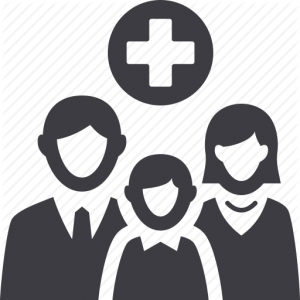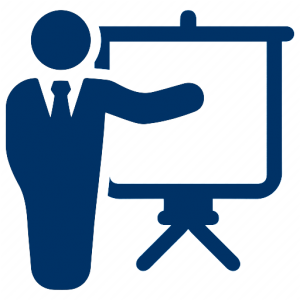Agents can add value to the group health plan that their clients are enrolled in by educating the insureds on how to maximize their benefits. This also will increase the agent’s value in the employer’s mind. With many families paying a monthly health premium that is higher than their mortgage, it is even more important to use the plan correctly. Listed below are some topics and brochures to enhance your enrollment and renewal meetings.
Stay in Network – insureds will receive more benefits by staying in network.
Both BCBS IL and Humana offer insureds the opportunity to register for their carrier’s member website where they can view accrued deductibles and out of pockets, claims in process, provider searches and more. They also offer members a mobile app, making it very easy to search for an in-network provider while on the go. Since the mobile app is linked to the plan they are enrolled in, the provider search option already has their network, making the search easier and more accurate.
Going out of network could result in very high expenses for the insured as those providers can balance bill the member any portion of the claim not paid by the health carrier. Also, out-of-network benefits have normally very high deductibles and out-of-pocket maximums. Due to the fact that out-of-network providers can balance bill any unpaid portion, this could result in unlimited out-of-pocket expenses.
Understand where to receive medical care to maximize benefits and reduce costs.
America offers some of the best medical providers in the world but understanding the difference in costs allows members to use their health plan better.
Hierarchy in costs:
Primary Care Physician – with plans offering a copay, this is often the least expensive visit.
BCBS offers a 24/7 nurse line that members (non-HMO) can call to discuss their medical condition and determine what provider they should see. This is a recorded conversation and if advised to go to the ER, that will be considered medically necessary.
BCBS and Humana offer a telemedicine option where the insured, using their smart phone or computer (with video capability) can virtually see a physician for minor medical issues. The physician can even prescribe medication via this method. Depending on your plan, costs again vary and usually is either a copay or low cost. Telemedicine is not available with BCBS HMO plans but is available with Humana’s HMO plans.
Urgent Care Center – when you can’t get in to see your primary care physician soon enough and it is not a life threatening situation, this is the next level  provider to see. These centers normally have longer open hours (including weekends) than primary care physicians. Many health plans have a simple copay for these visits that are not subject to deductible.
provider to see. These centers normally have longer open hours (including weekends) than primary care physicians. Many health plans have a simple copay for these visits that are not subject to deductible.
Emergency Room – the ER should be reserved for life threatening situations. This is the most expensive place to receive care and some health carriers are declining ER visits that are not life threatening saying it was not medically necessary to go to the ER. All carriers are increasing the ER co-payment to discourage members from going to the ER for minor health issues.
In-patient hospitalization – When being hospitalized for a non-emergency issue, it is advised to contact your health carrier prior to the visit to see if pre-authorization is necessary, to confirm that hospital and doctors are in network and discuss any other requirements that the health carrier may need to pay those medical claims.
Starting in 2019, BCBS IL will require pre-authorization for any in-patient services.
Prescription Drug Coverage – BCBS IL’s 2018 and 2019 group plans offer a 6 tier prescription drug coverage benefit.
Tier 1 – Preferred generic Tier 2 – Non-preferred generic
Tier 3 – Preferred brand Tier 4 – Non-preferred brand
Tier 5 – Preferred specialty Tier 6 – Non-preferred specialty
Preferred and Non-Preferred refers to the network level the Pharmacy is in. Preferred pharmacies will offer the lowest cost option while non-preferred pharmacies will cost more for the member. Both Preferred and Non-Preferred are considered in-network.
Most common Preferred Pharmacies include Walgreens, Jewel-Osco, and Walmart. You can use provider finder to search for pharmacies too.
Using an in-network pharmacy maximizes benefits:
- Co-pays/co-insurance amounts will apply to the in-network out of pocket amounts
- Pharmacy costs will apply to the in-network deductible (if your plan has one)
- Pharmacy costs will be lower
My Prime, www.myprime.com is the website for searching information on prescription drug coverage. My Prime can also be reached by clicking on the Find a Pharmacy link on the BCBS website or in the Blue Access for Members app. On My Prime, you can search:
- In network pharmacies
- Covered drugs
- Price comparisons between pharmacies
My Prime works best when members access it through their Blue Access for Members login or through the mobile app.
BCBS and EyeMed Vision Discount – The EyeMed Vision Discount through Blue365 offers savings on eyeglasses, contact lenses, eye exams, accessories and laser vision correction.
Providers include major national and regional retail locations: Lenscrafters, Pearle Vision, Target Optical, Sears Optical and JCPenney Optical as well as independent ophthalmologists and optometrists.
Visit eyemedexchange.com/blue365, click Find a Provider and begin your search. Be sure the Advantage network is selected. For more information about Blue365, log in to Blue Access for MembersSM (BAM) at bcbsil.com. Click the My Coverage tab at the top, and then click the Discounts link on the left.
When getting prepared for your next enrollment meeting, think about ways to educate your enrolled members. 
- If it is a small group and you do not have time to physically meet with the group, maybe you can forward an email to the employer to distribute to each eligible employee. This email could include an introduction of who you are, your contact information, and a brief description of the above topics. You can then include the spreadsheet of plans being offered with employee rates, brochures for more information as well as the employee application. Offer to be available by phone for any questions or personally call each employee. This might encourage more employees to enroll. Finally, provide the current SBCs to the employer and advise to distribute to the employees.
- If you are planning an onsite meeting with the employees, prepare printed packets including the above brochures as well as the spreadsheet of plans offered and an employee application for any employee wishing to make a plan change or enroll during the open enrollment. Include a cover letter with your information and any other products you could offer. Finally, provide the current SBCs to the employer and advise to distribute to the employees.
- Both the email and printed packet can be used by the group for any future new hires that may come on to the group after the open enrollment. This makes the HR person’s job a little easier and also might increase the chance of enrollment versus waiver.
Employees who understand how to use their plan, will have less unexpected problems and therefore be more satisfied with the health plan. The employer or HR manager will have less dissatisfied employees bringing problems to them to solve. The agent will have less problems to solve for the employer/employee and hopefully retain the group longer.
If you have any questions, please contact your assigned MIBS customer service representative.



Leave A Comment
You must be logged in to post a comment.